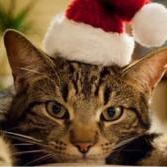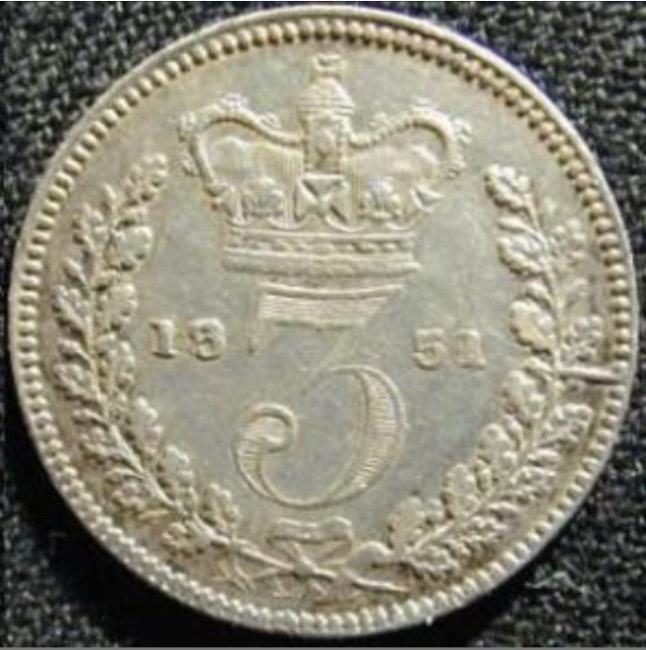-
Posts
498 -
Joined
-
Last visited
-
Days Won
30
Content Type
Profiles
Forums
Events
Downloads
Store
Gallery
Articles
Everything posted by Martinminerva
-
I bought a few coins from the Ingrams in the early 2010's but then had two bad experiences from them: twice they had mis-described the scarcer varieties I expected to be buying, and ended up sending me normal, common coins. OK, they took them back without any quibble BUT they did not refund my expenses of posting the wrong coins back by signed-for delivery, leaving me a few quid out of pocket for THEIR MISTAKES. Once could have been put down to an error, but twice shows it was deliberate on their part to eke a few more quid out of their customers. Needless to say, I have not ordered again from them in the last 5 years, nor do I ever expect to again. They also massively overgrade and, now, overprice their coins. If you read these posts, Messrs Ingram, perhaps you will understand that business is a two-way process.
-
Here's a very similar error or die repair rarity on an 1851 Threepence, often referred to as a 1551 Threepence! By the way, the picture is culled from the net, not mine! This seems too to be an exceptionally rare piece - how many others of this are out there? Any at all, like the sovereign?
-
No, and in know of no other 5+A for any other die number for 1867. As Nick says above would seem to be totally correct, with the addition that all other die 23 seem to be the normal 4+A. Regarding linkage, it varies between years and denominations. Most pairings seem to be consistent for die number, but I do have, for example, two 1868 sixpences with die number 2, but one is Davies pair 2+A and the other is 3+A. As I say above, a press operator could always change just one die in the case of damage, for example, and thus lose consistency. Just ripe for full research and publication, as I also say above!
-
As far as I know, only one specimen of die 23 is known with die pair 5+A. All other die 23s (including mine!) are the usual 4+A so keeping a watch might well prove fruitless - I have been watching for another for years!! I guess the one is a genuine mule - it is not necessary that both dies would be swapped in the press at the same time, so I suppose the obverse die was exchanged for some reason after the vast majority of this reverse die had been struck and then some more (but how many, and how many survive?) made with the obverse 5 die. I am sure SOME more will exist, but suspect it must be very very few. Any members got one? Yes, Clayton's die number list is sometimes inaccurate and very out of date. Even Bull's data isn't totally full or accurate. I know there are some collectors who do meticulous die number research, and at least one of them has for some time been intending to publish a formal work (yes please!) with photos of all his erstwhile specimens.
-

1862 Halfpenny Die Letter C
Martinminerva replied to loose54's topic in British Coin Related Discussions & Enquiries
Can't be a die letter B, I'm afraid... The lighthouse is the wrong type: all letter B's occur with the thinner, more cylindrical lighthouse and have the letters LCW above the 8 and 6 of the date. Not sure of the Freeman reverse die type/code offhand, but I'm sue some helpful person could post it. -
I'm afraid it's just a metal detector find that has been cleaned, either with a barrelling machine or some sort of dilute acid like vinegar or citric acid. As Jelida says just above, cupro-nickel coins out of the ground have a coppery tone when cleaned - I know, having been an active detectorist for years!! This is because the nickel leaches out into the ground a little, being slightly ferrous in its chemistry, leaving a higher percentage of copper remaining, especially on the coin's surface. Additionally, 20p's are struck in 84% copper and 16% nickel whilst, before they went clad steel, other denominations were struck 75:25 copper to nickel, so there's more copper to start with! Sorry, but it's just worth 20p!
-
See my post above... Actually the letters are put on first, but it's the same outcome! Upside down letters are not of any consequence at all - they really are 50:50 chance which way they come out of the hopper!
-

What's Your Job in Real Life?
Martinminerva replied to Madness's topic in Nothing whatsoever to do with coins area!
Yet another Classicist (what is it about coins and Classics??) and Classics teacher for last 26 years. You can probably tell that by my user name!! -
Where does this seller get all his pennies and varieties from, I wonder?? Like many on this forum, I guess, I have seen the sheer number and scope of his coins over the last couple of years and it is simply astonishing how he keeps turning up the rare types of penny in particular! He sure isn't buying them on eBay! Given too English is not this seller's first language, fair do's that he can research all the subtleties and nuances in Freeman or Gouby. I'm a bit jealous of his "magical penny tree" to misquote our beloved PM!!
-

1860 Penny Freeman obverse 1*
Martinminerva replied to Martinminerva's topic in British Coin Related Discussions & Enquiries
Thanks indeed, Bernie. So, is it only definitely Gouby obverse A from the match of dies? Is there a way of telling Gouby A from B on a coin as worn as this? -

Penny reverse ID please.
Martinminerva replied to mrbadexample's topic in British Coin Related Discussions & Enquiries
No. It's F22, 4+D and very common. You can just make out what's left of the LCW below the shield. -
Apart, that is, I guess from the 1953 plastic set at £14 and the "de luxe" specimen set at £15 ! You'd be annoyed now if you paid that for those in 1969. Look what else cost a similar amount then and compare to values now!! 1743 VF shilling for me, I think! Did anyone really pay those sums for plastic sets in 1969 ?
-
Just seen this on eBay. https://www.ebay.co.uk/itm/1841-halfcrown/183076706631?ssPageName=STRK%3AMEBIDX%3AIT&_trksid=p2060353.m1438.l2649 Both reverse and particularly obverse are completely "wrong" - bust, date numerals, legend font. I believe it is yet another of these replicas that are all over the numismatic world, yet worry that someone is going to get seriously burnt. Bids are already well over £300. Do members concur? There is also a genuine, slabbed one, on the site Buy it Now for £3900, which backs up my opinion. See https://www.ebay.co.uk/itm/VERY-RARE-1841-HALFCROWN-VICTORIA-349/222843579237?hash=item33e2832b65:g:3fYAAOSwsm1ZvnU4 Hope no-one here is bidding on the replica one!!
-

Peter Rabbit 50p with number 1 on it
Martinminerva replied to Jinky's topic in British Coin Related Discussions & Enquiries
Is the digit '1' incuse, or raised? If incuse, it is just likely to have been doctored, albeit skilfully. If it is raised, I think it becomes a very interesting piece as the die would have had to have had it engraved on it. Unless it is another of those Chinese knock-offs along the lines of the Kew or lines-over-face Olympic swimmer "replicas"...! -

Green Victoria
Martinminerva replied to Gaz T's topic in British Coin Related Discussions & Enquiries
It is die pair 7+H from Freeman's book, with the H under date for a Heaton mint. One of the most common pairs, I'm afraid... -
This is an example of a fairly common mint mis-strike: the blank from which the coin is struck has not fully settled into the collar that locates it between the dies (and which being grooved, also imparts the milling to the edge as the coin is squeezed between the dies). As such the bit of the blank that protrudes not only misses out on the milling, but can also "overflow" wider than the rest of the coin when pressure is applied with no collar to retain it, which sounds exactly like your description in the original post. An interesting curiosity, but of no real value, I'm afraid, but hope it helps answer your question.
-

1860 F9 Penny ?? TB/BB mule
Martinminerva replied to mick1271's topic in British Coin Related Discussions & Enquiries
It certainly is a mule, and in addition it is in smashing condition. Just shows that there are more of these rarities out there somewhere! Nice find! -

1836 Threepenny Bit Victoria
Martinminerva replied to sgpowelluk's topic in British Coin Related Discussions & Enquiries
I agree. The more numerous and smaller border beads on the reverse proves it has to date post-1866, according to the Davies die identifiers in his British Silver Coins book, plus the obverse too has to be a later type as it is in lower relief. I suspect either accidental damage or else someone "tinkering" with the date to produce a curiosity.- 8 replies
-
- threepenny
- victoria
-
(and 1 more)
Tagged with:
-

KING GEORGE THE IIII 1822
Martinminerva replied to scotsman's topic in British Coin Related Discussions & Enquiries
I agree. With the various edge and dig problems, it's only a Good Fine for me - albeit a nice colour. But it is certainly genuine. Value though only £100 tops for me; if you've got two hundred spare, you could get a much nicer one, I feel. -

George IV Crown - Chinese fakes
Martinminerva replied to seuk's topic in British Coin Related Discussions & Enquiries
Good idea, but a seller has the choice about whether to publish enquiries on their listing or not - it is not automatic, so unfortunately a dodgy seller won't of course pay any attention to such queries.



